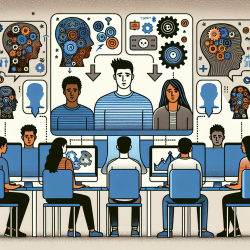Introduction
In the realm of mental health care, crisis response often serves as a critical juncture where human rights can be either upheld or violated. The research article "Crisis Response as a Human Rights Flashpoint" presents a comprehensive framework for rights-based crisis intervention, emphasizing nine critical elements that can significantly enhance the quality of care while safeguarding human rights. This blog aims to translate these findings into actionable insights for practitioners, particularly those involved in online therapy services like TinyEYE.
The Importance of a Rights-Based Approach
Adopting a rights-based approach to crisis response is not merely a theoretical exercise; it is a practical necessity. The research underscores that traditional mental health systems often resort to coercive measures, which can infringe on the rights of individuals experiencing emotional distress. By integrating human rights principles into crisis response, practitioners can create a more compassionate and effective care environment.
Nine Critical Elements for Rights-Based Crisis Response
- Communication and Dialogue: Effective communication is crucial for understanding the individual's perspective and fostering empowerment.
- Presence ("Being With"): Simply being present can provide comfort and reduce feelings of isolation.
- Flexible Location: Meeting individuals in their preferred environment can enhance comfort and dignity.
- Safe Spaces of Respite: Providing non-coercive, supportive environments can aid in recovery.
- Continuity: Ongoing support from the same personnel fosters trust and stability.
- Meaningful Peer Involvement: Engaging peers who have lived experience can offer unique insights and support.
- Harm Reduction: Focus on reducing risks associated with distressing behaviors rather than immediate cessation.
- Judicious Use of Medications: Use medications sparingly and only when necessary, respecting the individual's preferences.
- Response to Basic Needs: Addressing immediate needs such as food, shelter, and safety is essential for crisis resolution.
Practical Application for Practitioners
For practitioners at TinyEYE and similar organizations, integrating these elements into practice can lead to better outcomes for children and adults alike. For instance, employing a dialogical approach can help in understanding the unique needs of each child, thereby tailoring interventions that respect their autonomy and dignity. Additionally, involving peers in the therapeutic process can provide relatable support and foster a sense of community.
Encouraging Further Research
While the research provides a robust framework, there is always room for further exploration. Practitioners are encouraged to contribute to the growing body of evidence supporting rights-based approaches by documenting outcomes and sharing insights. Such efforts can pave the way for more widespread adoption of these principles, ultimately transforming mental health care systems globally.
Conclusion
Implementing a rights-based approach to crisis response is not only a moral imperative but also a pathway to more effective mental health care. By focusing on the nine critical elements outlined in the research, practitioners can enhance their skills and create better outcomes for those they serve. To read the original research paper, please follow this link: Crisis Response as a Human Rights Flashpoint.










